Introduction
Brick is one rectangular building unit that constitutes the whole structure. It is mainly made of clay at high temperature and is mostly red in color. Other constituents of bricks are sand, cement, lime and fly ash. There are many patterns involved in laying bricks some of which are going to be discussed here. Nowadays, concrete hollow bricks are replacing the conventional bricks as more advancement in technology is going on. The standard size of brick used in buildings without mortar is 219 x 9 x 9 cm and with mortar the size is 20 x 10 x 10 cm. Bricks contribute in distribution of loads and maintain stability of the structure. Thus, bricks are such units that are irreplaceable in construction industry till today.
Types
There are various types of bond in brick masonry. Some of them are –
1. Stretcher bond – It is a bond in which the pattern is made solely using stretchers, with the joining on each course centered above and below by half brick. This type of bond are common in United Kingdom. Also, such bonds are not very strong as joining is weak at some points and higher pressure can lead to disintegration of bricks. There is not much loss of any material since the bricks do not have to be cut to particular sizes.
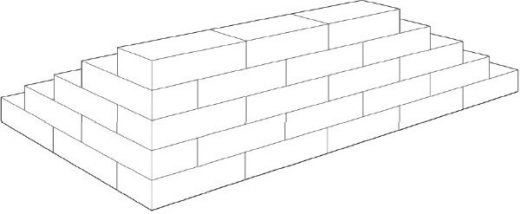
Fig 1 : Stretcher Bond in Bricks
Courtesy : Brick Architecture
2. Stack bond – Here, the facing bricks are placed one on top of the other in such a manner that the horizontal edge joints as well as the vertical head joints are continuous. Also, the bricks can be placed horizontally as well as vertically. Such bond is applied for decorative purpose and in rain-screen.
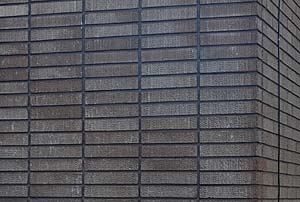
Fig 2 : Slack bond
Courtesy : Designing Buildings
3. English Bond – Here the headers and stretchers are placed in alternate positions. The joining points are between the stretchers and are centered on the headers in the course. It is one of the strongest bond in brick masonry but one major drawback is that here the facing are required more in number compared to other type of bonds. It’s application includes bridges and embankment walls.
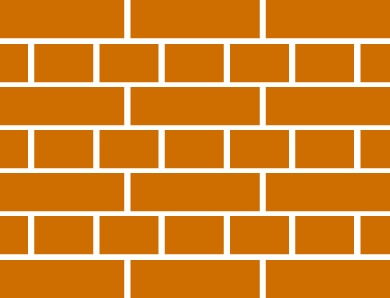
Fig 3 : English Bond
Courtesy : Forterra
4. Flemish bond – Here all the courses consist of a header and a stretcher in consecutive manner. The headers of each course are centered on the stretchers of the course below. Also, extra cutting work is included here compared to other bonds. Such bonds are weaker than English bond by about one brick thick.
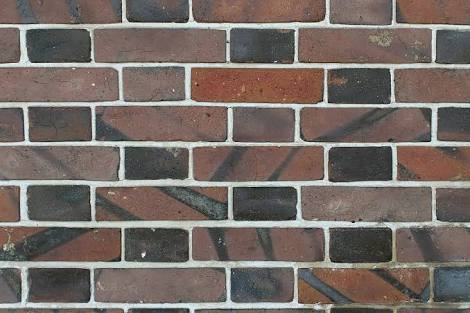
Fig 4: Flemish bond
Courtesy : Wiktionary
5. Monk bond – Here, two stretchers are there between the headers in each course. The headers are centered over the joint between the two stretchers in the course below. This type of bond was popular in 13th & 14th centuries. It is elegant & simple. Also, it is lower in price as compared to English and English cross bond.
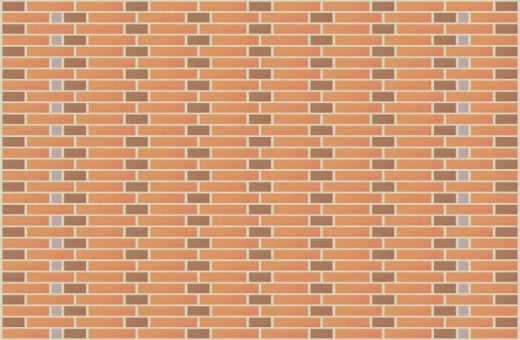
Fig 5: Monk bond
Courtesy : Wikimedia Commons
6. Header Bond- Earlier, header bonds were used mainly for curved brickwork and highly sophisticated buildings. But now it is sometimes combined with regular stretcher bond to make a curve wall. Here, all the courses consist of headers that are staggered by half a brick. Such bond is similar to stretcher bond but here headers are used instead of stretchers.
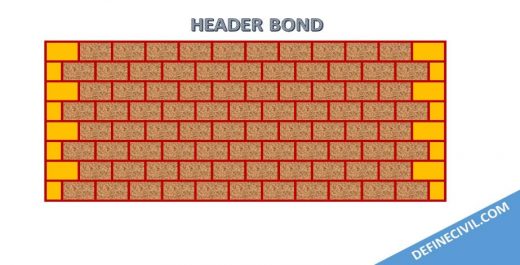
Fig 6: Header Bond
Courtesy: Define Civil
7. English cross bond – It is a bond consisting of headers & stretchers in alternate position. The position of stretchers are in center between stretchers that are below them. It gives a staggering look & so it gives the advantage of picking different colors and textures. Under this, two types are there – English bond with king-closer and English bond with queen closer.
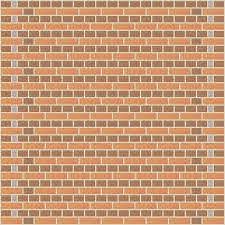
Fig 7: English cross bond
Courtesy: Wikimedia Commons
8. Block bond- It is a bond that combines both stack and stretcher bond. Here, two courses are laid in stack bond followed by next two courses while staggering by half a brick. It gives immense opportunity for creativity.
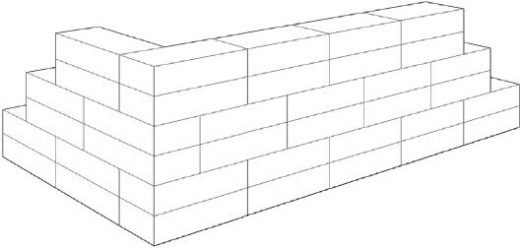
Fig 8: Block bond
Courtesy : Architects
Conclusion
Many other such variations are being discovered in bonds in brick masonry that gives stability to the structure. These variations are not only important in providing aesthetic look but also provide strength to the wall for balancing load like in case of retaining walls. In different countries various other bonds are also developed to deal with other situations like frost, snow, high temperature conditions and many more. Also, in many cases cost is the governing criteria and so the bond which is cheaper is used. Ultimately, it depends upon the type of construction works and the situations involved.
References
- Brick Architecture, “Brickwork bonds” – https://brickarchitecture.com/about-brick/why-brick/brickwork-bonds
- Designing Buildings Wiki, “Types of brick bonding”- https://www.designingbuildings.co.uk/wiki/Types%20of%20brick%20bonding
If you have a query, you can ask a question here.



why do bank use block walls maiinly and homes use red brick. i am building a home what is the cheapest one to use in labor and durability & cost of materials. what do i do!!!